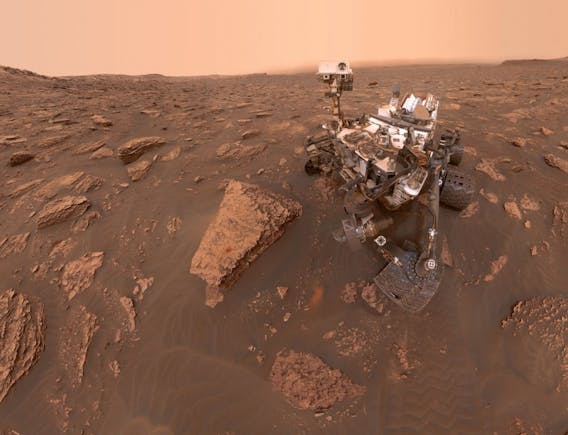Humankind has a knack of discovering new things. Some of these advancements revolve around the furthering of our collective space knowledge. Scores upon scores of baby boomers will inevitably recall Neil Armstrong’s 1969 moon landing, oftentimes remembering the circumstances leading up to the event with anomalous accuracy. In sharp contrast to the joy surrounding Armstrong’s steps on the moon, slightly younger generations will remember the anguish surrounding the nationally-televised Challenger shuttle explosion in 1986.
However, for those too young to have experienced the aforementioned events, one more avenue of space-related newsworthiness may permeate their mind: the ongoing exploration of Mars.
In 1976, the United States-operated Viking 1 landed on Mars, marking the world’s first successful landing of a spacecraft on the Red Planet. Once it became clear that attempts to land spacecraft directly on the surface of Mars were feasible, pursuits of surface-level exploration began to come together at a fever pitch.
One such endeavor was the 2003 landing of the NASA Opportunity rover. For fifteen years, Opportunity relayed data back to NASA until its mission was ruled completed this past February. Though the demise of the rover ruled the headlines in space-related spheres, many pointed to the continuous exploration of Mars as a reason for optimism.
One rover currently perusing the surface of Mars is Curiosity. Becky Williams, a Waunakee resident and member of the non-profit Planetary Science Institute, noted that the act of managing a rover is no routine task.
“Each day was an adventure,” Williams said. “One of the great joys in participating in planetary exploration is seeing new terrain.”
Williams, who holds a doctorate in Planetary Geology from Washington University in St. Louis, was selected as a participating scientist for Curiosity two days prior to its 2011 launch. From there, she took a position as the Geology Team lead for Curiosity, as well as a role in plan management for the rover. “Our observation plans are finalized in the mornings, by mid-day the team comes together to walk through the plan and make final tweaks, and in the afternoon we look ahead to planning future observations,” Williams explained. “In doing so, we start the process for the team coming in the following day.”
For Williams, each day held the tantalizing potential for new light to be shed on previous mysteries. She noted the particular triumph of making key discoveries in the study of water on Mars, which was a research focus for Williams.
“Early in the mission, we discovered river deposits,” Williams said. “To see an idea go from hypothesized based upon remote satellite imagery to the point of seeing that ground truth, is extremely rewarding for a scientist. Especially for me, as a planetary scientist, it’s not often that you get to see something through because of the length of time involved with mission planning.”
In addition to strides in water research, Curiosity also gained renown for consistently producing striking images of the surface of Mars.
R. Aileen Yingst, senior scientist at the Planetary Science Institute, current deputy principal investigator for the Mars hand-lens imager, (often abbreviated as MAHLI) and former director of the Wisconsin Space Grant Consortium at UW-Green Bay, noted that her work entails tremendous implications on the overall success of the rover.
“I am in charge of the tactical operations for MAHLI,” Yingst said. “Meaning that, when scientists and engineers need to decide what Curiosity is going to do for a certain plan, for a certain number of Martian days, I am in charge of making sure that all of the activities that the MAHLI camera does entail good science, good engineering, and are safe for the instrument.”
Yingst notes that the instrument is meticulously engineered to capitalize upon any opportunities for efficiency. “Every single gram of anything that you send into space costs quite a bit extra in terms of fuel consumption,” Yingst explained. “MAHLI is optimized for low mass, high data volume and the ability to withstand the extreme rigors of the launch, entry, descent, landing and surviving years in the extreme environment of Mars.”
As is the case with Williams, Yingst has felt her share of triumph through the process of implementing Curiosity as well.
“One of the things I’m most proud of doing with the MAHLI camera is the rover’s self-portrait,” Yingst said. “That was one of those things that took me and some of my engineering colleagues 84 days to get through the system, but we felt that it was such an important thing to do for the sake of creating an iconic image.”

A self-portrait of NASA's Curiosity rover taken on Sol 2082 (June 15, 2018). Photo courtesy of NASA.
Furthermore, the importance of their work for America as a whole is not lost on them.
“I think it’s important for the public to know that we who work on these rovers understand the huge responsibility that we have in conducting planetary research — not just for ourselves and our colleagues — but for the country and for posterity,” Yingst said. “We’re grateful for that opportunity, and we hope that we make the taxpaying public proud.”






